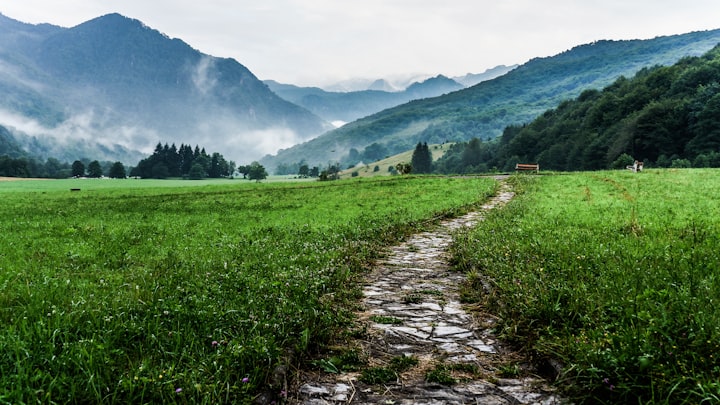Embracing Simplicity: The Enduring Legacy of Growing Up in Hut Houses
Rediscovering Community, Connection, and Sustainability in a Modern World

Title: Embracing the Simplicity: Growing Up in Hut Houses
In the heart of simplicity lies the essence of true living. It’s a notion deeply ingrained in the memories of those who grew up in hut houses. These humble abodes, constructed from locally sourced materials, not only provided shelter but also fostered a sense of community and connection with nature. As urbanization and modernization sweep across the globe, the significance of these traditional dwellings becomes more pronounced, reminding us of the beauty found in simplicity and sustainability.
Hut houses, also known as huts, cottages, or shacks, are simple structures typically made from natural materials such as wood, thatch, mud, or bamboo. They have been a staple of rural communities for centuries, offering shelter to families in various parts of the world. While their designs and construction methods may vary depending on cultural and geographical factors, the underlying principles remain the same – to create a functional and harmonious living space in harmony with the surrounding environment.
For many who grew up in hut houses, childhood was defined by a deep connection to nature. Unlike the concrete jungles of urban landscapes, hut house communities are often nestled amidst lush greenery, with fields, forests, and rivers serving as the backdrop of daily life. Children would spend their days exploring the outdoors, climbing trees, chasing butterflies, and learning about the natural world firsthand. This intimate relationship with nature instilled in them a profound respect for the environment and a sense of stewardship towards the land.
Moreover, hut houses fostered a strong sense of community spirit. In these close-knit neighborhoods, everyone knew each other, and neighbors were like extended family members. Sharing resources, lending a helping hand, and celebrating festivals together were integral parts of communal life. Whether it was gathering around a bonfire for storytelling, participating in traditional rituals, or working collectively in the fields, the bonds forged within these communities were enduring and resilient.
The simplicity of hut houses also encouraged creativity and resourcefulness. With limited access to modern amenities, inhabitants relied on their ingenuity to meet their daily needs. From cooking meals over an open fire to crafting furniture from reclaimed materials, every aspect of life required a hands-on approach. Children would often join their parents in household chores and learn valuable life skills through observation and participation. These experiences not only nurtured self-reliance but also instilled a sense of pride in one's abilities to adapt and thrive in any circumstance.
However, as the world modernized and urbanization accelerated, the allure of hut houses began to fade. Many families migrated to cities in search of better opportunities, leaving behind the simplicity of rural life for the promises of urban living. As a result, traditional hut house communities started dwindling, and with them, the rich cultural heritage and way of life they embodied.
Yet, amidst the rapid pace of change, there is a growing recognition of the value inherent in traditional wisdom and sustainable living practices. Efforts to preserve and revitalize hut house communities are underway in many parts of the world, driven by a desire to reconnect with nature, foster community resilience, and promote environmental sustainability.
In recent years, initiatives promoting eco-friendly construction techniques and alternative housing models have gained traction, drawing inspiration from the simplicity and efficiency of hut houses. From earthbag homes to tiny houses and eco-villages, there is a renewed interest in building homes that are not only environmentally friendly but also affordable and culturally relevant.
Moreover, the rise of sustainable living movements and awareness about the environmental impact of modern lifestyles has sparked a reevaluation of our relationship with the planet. Many are now seeking to emulate the principles of simplicity, self-sufficiency, and harmony with nature embodied by hut houses in their own lives. Whether through adopting minimalist lifestyles, embracing permaculture principles, or advocating for sustainable development policies, individuals and communities are striving to create a more balanced and resilient future.
In conclusion, growing up in hut houses was more than just a childhood experience – it was a way of life deeply rooted in simplicity, community, and harmony with nature. While the world around us continues to evolve, the lessons learned from these humble abodes remain timeless and relevant. As we navigate the complexities of the modern world, may we draw inspiration from the wisdom of the past and strive to create a future that is grounded in the values of simplicity, sustainability, and solidarity.
About the Creator
Ssekatawa Isah
Greetings, I'm Ssekatawa Isah, a master storyteller hailing from Uganda. Through my tales, I paint vivid landscapes of our vibrant culture and the mesmerizing beauty of our land.






Comments
There are no comments for this story
Be the first to respond and start the conversation.